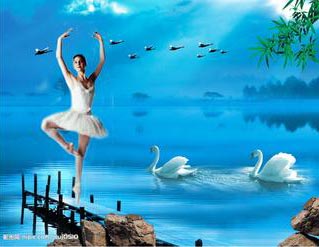Swan Lake

Pyotr Ilyich Tchaikovsky
-
曲谱信息
-
标 题:
Swan Lake
-
作曲者:
Pyotr Ilyich Tchaikovsky
-
表演者:
Pyotr Ilyich Tchaikovsky
-
改编/制谱:
未知
-
调 号:
C调
-
风 格:
古典
-
难 度:
初学
-
类 型:
原版曲谱
-
收藏量:
14
-
热度:

-
曲谱简介:
Swan Lake (Russian: Лебединое озеро, Lebedinoye ozero) ballet, Op. 20, by Pyotr Ilyich Tchaikovsky, was composed in 1875–1876. The scenario, initially in four acts, was fashioned from Russian folk tales and tells the story of Odette, a princess turned into a swan by an evil sorcerers curse. The choreographer of the original production was Julius Reisinger. The ballet was premiered by the Bolshoi Ballet on 4 March 1877 at the Bolshoi Theatre in Moscow, billed as The Lake of the Swans. Although it is presented in many different versions, most ballet companies base their stagings both choreographically and musically on the 1895 revival of Marius Petipa and Lev Ivanov, first staged for the Imperial Ballet on 15 January 1895, at the Mariinsky Theatre in St. Petersburg. For this revival, Tchaikovskys score was revised by the St. Petersburg Imperial Theatres chief conductor and composer Riccardo Drigo. According to two of Tchaikovskys relatives—his nephew Yuri Lvovich Davydov and his niece Anna Meck-Davydova-the composer had earlier created a little ballet called The Lake of the Swans at their home in 1871. This ballet featured the famous Leitmotif known as the Swans Theme (or Song of the Swans). Begichev commissioned the score of Swan Lake from Tchaikovsky in 1875 for a rather modest fee of 800 rubles, and soon Begichev began to choose artists that would participate in the creation of the ballet. The choreographer assigned to the production was the Czech Julius Reisinger (1827–1892), who had been engaged as balletmaster to the Ballet of the Moscow Imperial Bolshoi Theatre (today known as the Bolshoi Ballet) since 1873. It is not known what sort of collaborative processes were involved between Tchaikovsky and Reisinger. It seems that initially Tchaikovsky worked without complete knowledge of Reisingers specific requirements. Tchaikovsky likely had some form of instruction in composing Swan Lake, as he had to know what sort of dances would be required. But unlike the instructions that Tchaikovsky received for the scores of The Sleeping Beauty and The Nutcracker, no such written instruction is known to have survived. When Reisinger began choreographing after the score was completed, he demanded some changes from Tchaikovsky. Whether by demanding the addition or removal of a dance, Reisinger made it clear that he was to be a very large part in the creation of this piece. Although the two artists were required to collaborate, each seemed to prefer working as independently of the other as possible. Meanwhile, Swan Lake stave is quite suitable to play. Have a look, you will know that it is really simply, isnt it?
相关曲谱
更多弹友视频
作者的其他曲谱
更多评论(共0条)
表情
PC播放器不支持打开此曲谱,请在手机、平板端播放。
微信扫码安装《弹琴吧APP》




















 京公网安备 11010502034754号
京公网安备 11010502034754号